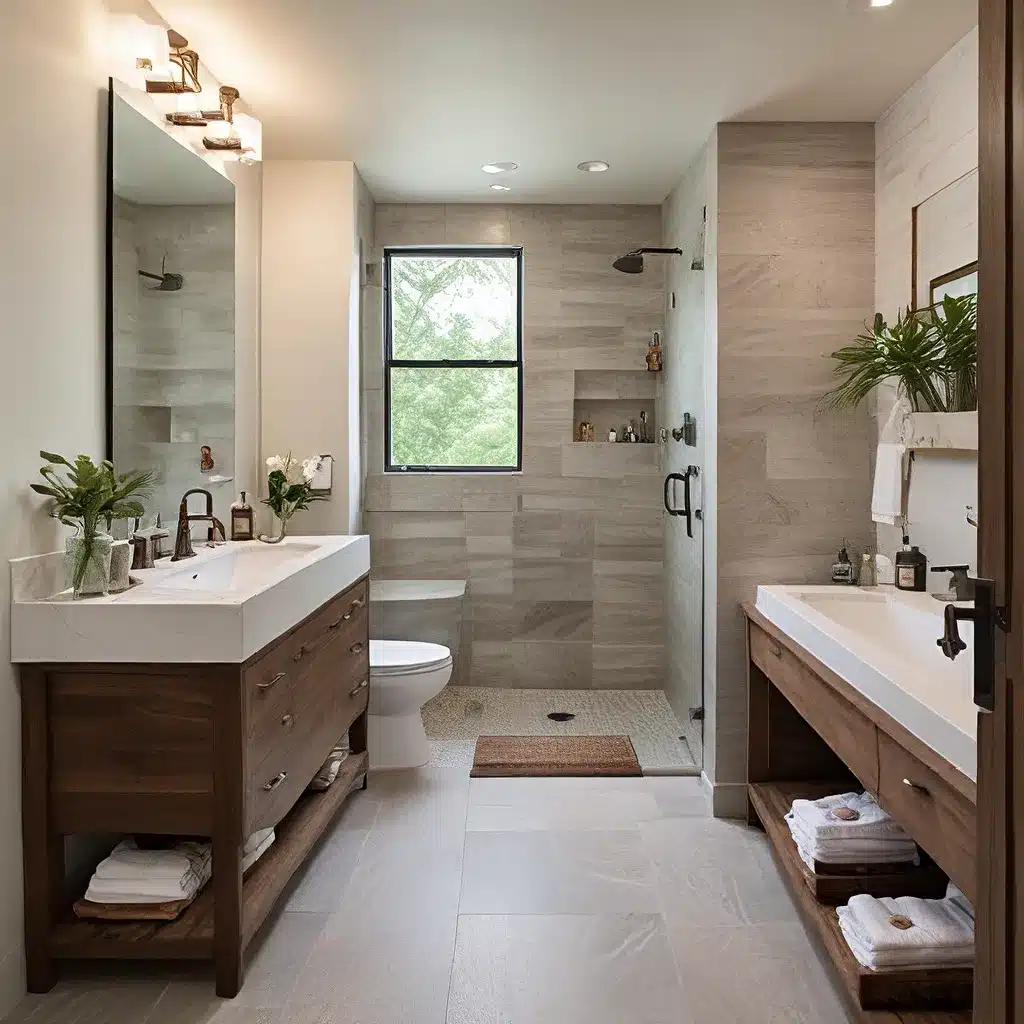
In today’s world, where environmental consciousness is more crucial than ever, the bathroom has become a prime battleground for sustainable living. As we seek to create personal sanctuaries that nourish both body and soul, the washbasin has emerged as a pivotal element in crafting an eco-friendly bathroom oasis.
Choosing Sustainable Washbasin Materials
The foundation of a sustainable bathroom lies in the materials used for its fixtures and finishes. When selecting a washbasin, homeowners and designers must prioritize eco-friendly and long-lasting options that minimize their environmental impact.
Bamboo is a standout choice, as it is a highly renewable and fast-growing resource. Its natural beauty and durability make it an excellent option for vanities, shelving, and even washbasin surrounds.
Another sustainable material gaining popularity is recycled glass tiles. These tiles not only have a distinctive texture and vibrant color palette but also reduce the need for new raw materials, lowering the ecological footprint of the bathroom renovation.
For a more rustic and earthy aesthetic, reclaimed wood offers a sustainable alternative to traditional cabinetry and shelving. By repurposing existing materials, this option decreases the demand for new timber while adding character and charm to the space.
When it comes to the washbasin itself, porcelain and ceramic remain popular choices due to their durability, easy maintenance, and recyclability. However, for those seeking a more unique and eco-conscious approach, natural stone washbasins, such as soapstone or marble, can provide a stunning centerpiece that harmonizes with the overall sustainable design.
Integrating Nature-Inspired Elements
Bringing the outdoors in is a cornerstone of creating a spa-like sanctuary in the bathroom. And what better way to do so than with the addition of lush, air-purifying plants?
Spider plants, peace lilies, and Boston ferns are all excellent choices for the bathroom, as they thrive in the humid environment and work tirelessly to filter out pollutants, ensuring a healthier indoor climate.
Strategically positioning these verdant companions around the washbasin or bathtub can transform the space into a vibrant oasis, where the senses are enveloped in the calming presence of nature. The interplay of textures, colors, and the gentle rustling of leaves creates a truly immersive experience, elevating the everyday routine into a mindful moment of respite.
Optimizing Water and Energy Efficiency
Sustainable bathroom design extends far beyond the visual aesthetic; it’s about minimizing resource consumption and maximizing efficiency. When it comes to the washbasin, this translates to thoughtful choices in plumbing and fixtures.
Low-flow faucets and showerheads are a must-have for the eco-conscious homeowner, as they reduce water usage without compromising the showering or hand-washing experience. By curbing the flow of water, these fixtures contribute to overall water conservation efforts, positively impacting both the environment and your utility bills.
In addition to water-saving measures, energy-efficient lighting plays a crucial role in creating a sustainable bathroom. LED bulbs and motion-sensor lights not only lower your carbon footprint but also provide a soothing, adjustable ambiance that can transform the space from a vibrant morning routine to a serene evening retreat.
For those seeking to push the boundaries of sustainability, water-recycling shower systems offer an innovative solution. These cutting-edge technologies capture and reuse a portion of the water, drastically reducing the overall water consumption associated with your daily cleansing rituals.
Maintaining a Sustainable Sanctuary
Crafting a sustainable bathroom is just the beginning; ensuring its long-term functionality and environmental impact requires ongoing maintenance and mindful upgrades.
Regular checks and prompt attention to any plumbing issues, such as leaks or blocked drains, are essential to maintaining the integrity and efficiency of the space. Addressing problems before they escalate not only preserves the aesthetic appeal of the bathroom but also prevents potential water damage and the need for costly repairs.
When the time comes for fixture replacements or renovations, homeowners should prioritize water-efficient and energy-saving options that build upon the existing sustainable foundation. This could include upgrading to a dual-flush toilet or installing motion-sensor faucets – small changes that can have a significant impact on the bathroom’s overall environmental footprint.
Elevating the Everyday with Eco-Friendly Toiletries
The journey towards a sustainable bathroom doesn’t end with the fixtures and fittings; it extends to the personal care products we choose to stock our shelves with.
Opting for natural, cruelty-free shampoos, conditioners, and body washes not only reduces the use of harsh chemicals but also ensures that our daily cleansing rituals align with the eco-conscious ethos of the space. These mindful selections contribute to a holistic approach to wellness, where the products we use are as nourishing for the environment as they are for our bodies.
By integrating these eco-friendly and sustainable practices into our bathroom design and routines, we can transform this often-overlooked space into a personal sanctuary that nourishes both the soul and the planet. After all, as we seek to create a more harmonious world, it’s the little choices we make every day that can have the biggest impact.
So, embark on your journey towards a sustainable bathroom and discover the restorative power that lies in crafting a space that celebrates the beauty of nature, the efficiency of technology, and the wellness of our collective future.

